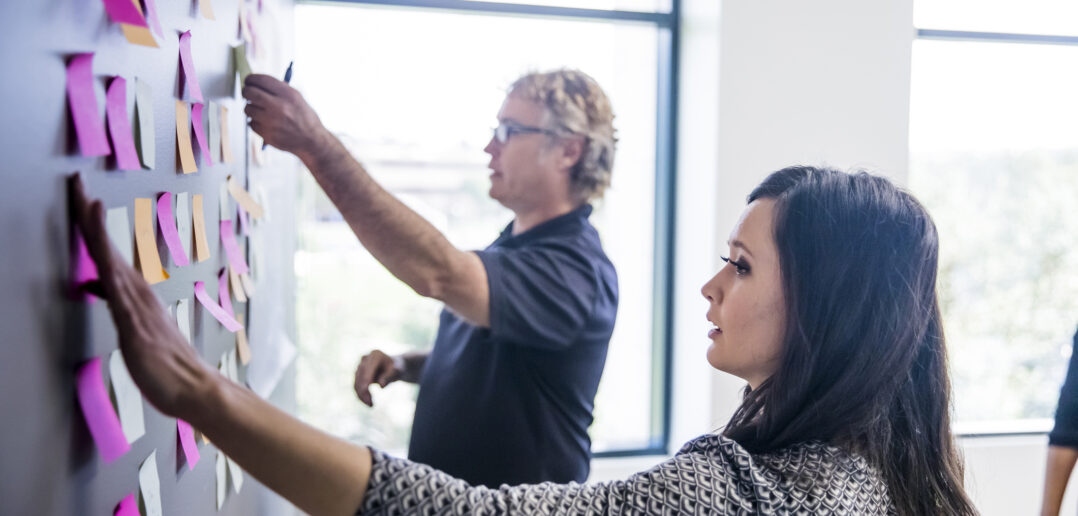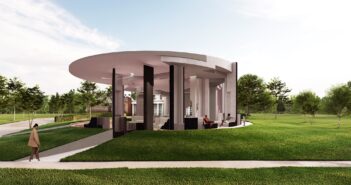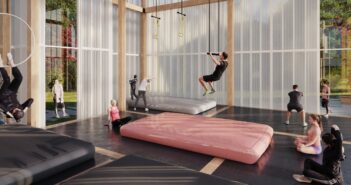Every company needs talented, skilled people. Over the years companies try to employ more and more talented, skilled people, that fit their requirements, business model and working practices. They continually optimise for the market they are in, particularly the larger ones. They become more and more efficient, more and more ‘Six Sigma’ – lean, mean business machines. And it works. Or at least it does right up until the moment it does not.
The most talented, skilled, efficient horse saddle maker in history probably existed on the day the first Model T automobile rolled off the Ford production line in 1908. From 1900-1910 the US horse population increased by 70%.
Life was looking great for saddle makers, just as their industry was about to collapse. Technology changed their world, and there was nothing they could do about it.
Technology is doing the same today to the real estate industry. The ten years 2010 – 2020 were golden. Equities had a great decade but globally listed real estate did even better. Is it any wonder there has been so little innovation within the real estate industry over the last ten years? Of course not, the sector was humming and everyone just double downed and continued to optimise for a business model that was positively purring with success. And that is no criticism, innovation seldom occurs without some form of ‘burning platform’.
The ‘burning platform’ though did exist. It’s just that hardly anyone noticed. Demand was changing but hidden in plain site. What was missing was the spark to ignite the platform. No spark, no worries.
And then the spark arrived, wrapped in a global pandemic. Another Model T moment. Within weeks, commercial real estate closed down. Shops shut, restaurants, hotels and bars closed and offices emptied.
This is where technology kicked in. Because it turns out that, without us really noticing, the world had changed dramatically over the last ten years. Although locked away in our homes, much of the economy actually continued, barely missing a beat. We reel at news of 10-20% drops in GDP but in reality it is extraordinary that the economy has not collapsed much further and faster. 20 years ago, with the internet as it was then, the economies of the world would have simply shut down.
We cannot do much about the world of personal services and hospitality until restrictions on social distancing are lifted, but globally the business community has learnt a huge lesson. Technology has enabled us to understand that ‘work is something you do, not somewhere you go’ is actually true. Hundreds of millions of people working from home, works.
Many knew this was true but it really was the burning platform ‘hidden in plain site’. One of the most striking things of the last few months has been the number of CEO’s expressing astonishment that their businesses are functioning, and in many cases functioning very well indeed. The top 5 winners from the pandemic alone have put on over a $1Trillion in market capitalisation.
So, where does this leave the real estate industry, and what does it tell us about the talent that will be required to survive and thrive over the next ten years? Let’s focus on the office sector. Retail, industrial and residential are also changing but in different ways.
The simplest answer is that it means the real estate industry needs to transform from being one that sells a product to one that delivers a service. It means that our customers no longer need what we have to sell. They don’t need an office to work. Going forward they need to be made to want one.
And that is a very different dynamic.
The pandemic has simply acted as a forcing function to trends that were underway anyway, but what a forcing function. In the UK since lockdown e- commerce is up by a third, online groceries up by 84% and as noted above, 90%+ of the office workforce is working from home. Mostly video conferencing on Zoom, which has gone from 10 – 300 million daily users in a few months. Perhaps more importantly, this new behaviour has been adopted now for many months. Habits are being formed, workflows adjusted and we’re getting a solid handle on what works and what doesn’t, and what we like and what we don’t like, about living like this.
And frankly, none of the conclusions are all that surprising. We all appreciate flexibility, agency over our own lives, the freedom to be able to focus when we want to and without endless interruptions, the humanity of having more work/life balance, and the ease with which we can order just about anything and have it delivered to us in no time at all. What we miss is seeing and working with our colleagues, team mates and friends in person, the time away from our homes (we all need a certain amount of ‘space’) and the social and experiential enjoyment of being amongst our fellow humans.
Being human, with other humans, is stimulating, enjoyable and entertaining. Of course we miss that.
However the things we miss are the things that we were going to be doing more of anyway, because of technology. As long ago as 2017 McKinsey were writing that ’47% of the tasks people were paid to do globally, could be automated by using currently demonstrated technology’. Much of what we have traditionally done ‘at work’ was leaving the building anyway. Very rapidly, any task that was ‘structured, repeatable, predictable’ was being co- opted by ‘the machines’. The workplace was changing fast because the work we do is changing fast. New work, future work, is increasingly based on those skills, that talent, that we humans have that the machines do not.
So, design, imagination, inspiration, creation, empathy, intuition, innovation, abstract & critical thinking, collaboration, social intelligence and judgement.
And this means that, just like us, our customers are going to need spaces and places that catalyse these human skills. And mostly, those are not the spaces and places we have been developing, and bringing to market, to date.
All of this is happening on a continuum; whilst overall the great home working experiment has proven a success, it is definitely working better for some people than others. For multiple reasons. Some people do not have the space to work at home, or are sharing with friends or family in a way that makes it hard to carve out any work time. Some are working with poor equipment, be it old or underpowered computers or laptops, slow or intermittent broadband, inadequate chairs or desks or lighting.
And some are working for companies structured and operated for a fixed not flexible world. Working in a distributed manner, mostly away from a central HQ, does require a different organisational structure and a different management style. This though is a known known, and various large, fully distributed companies, such as GitLab and Automattic (each with 1200+ employees across 60+ countries with no ‘offices’) provide a great deal of information and best practice for how to operate as they do. Over time we’ll see many more companies adapting to this new way of working and becoming more effective even than they have rather remarkably been, despite everything, during the pandemic.
All the above gets us to a position where, as Dror Poleg has written: ‘Covid-19 forced everyone to stop and think. Previously, companies had 100% of their employees at the office and contemplated how many of them can be allowed to work remotely. Now, companies are starting with 100% of employees working remotely and are contemplating how many of them should be at the office at all, how often, and for what purpose.’
This cuts to the chase: what is the value proposition that will make companies regard an office as an asset, not a liability? And that question in turn leads to the next, ‘what talent or skills are required to develop and maintain this value proposition?’.
The clearest conclusion is that we need to be creating spaces and places that offer our customers what they cannot get at home. So to do that we need to understand what it is that fits that bill. So real estate is going to have to start doing what consumer goods companies have been doing for decades. Speaking to customers, understanding their wants, needs and desires and developing products and services based on the quantitative and qualitative data they gather during this process. Most likely they will adopt tools like the Value Proposition Canvas to help them define and refine their offering.
From here it should be possible to design a UX (User Experience) for your target customer that satisfies their wants, needs and desires. Part of that process will involve people with three different skill sets: Thinkers, Feelers, Doers. So thinkers analyse the data and customer requirements, feelers use empathetic skills to understand the psychology, sociology, anthropology and emotions behind those requirements, and then the doers work out how to build what is required. Some needs will involve more of one skill than the other, but each need can be broken down into an appropriate mix of inputs necessary to achieve a desired output.
All of this is about understanding the brand you wish to create, and that brand will be, as Jeff Bezos said, ‘what people say about you when you are not in the room’. Traditionally the notion of brand has been something the real estate industry did not think has anything to do with them. Which is why you’ll barely find any real estate companies with brands that individual customers recognise. Though they will all know WeWork. And the future is in that comment. For a #FutureProofOffice will be branded. And in terms of talent, this is where we have to start. Your talent has to be able to build your brand.
As you can see, this is moving way beyond traditional real estate. And that is because real estate on its own cannot deliver a strong enough value proposition anymore. It only could when an office was needed in order to work. Now that we have to make our customers want an office, we need to add layers of software and services to our hardware. We are designing an experience that makes someone want something they do not need.
The reality is that the real estate business is no longer about real estate. That is just the starting point. Yes we need strong real estate skills, yes we need all the skills, talent and knowledge we have today, but that is now necessary, but not sufficient.
The skill set required to create great user experiences for customers (and UX= Brand) incorporates six areas of the ‘office’ industry that exist today but rarely talk to each other. Certainly not in any sort of ongoing, joined up manner. They are: real estate, networking (IoT), data capture and analytics, workplace, HR and hospitality. All of these need to be thought of as integral components in a single product/service. All of these are part of what it takes to build a brand. To create, and then curate a great workplace requires all the knowledge, skills and domain expertise of all these specialities to be brought together and managed as a single system. Without doing so we will perpetuate the inefficient usage of so many offices today, as well as the generally low satisfaction in their office of the average occupier.
We need to think of the office as software, and treat it like tech companies treat their own software. Build, measure, learn is the golden rule of software development. You build something, get it in the hands of users, measure how it gets used, and then build a new version, incorporating what you have learnt. And repeat. And repeat. This is why no software is ever finished, it is always version X.Y.Z. Our offices, the product/service we are going to make customers want, needs to be like this. We need to design it thoughtfully in the first place, then we need to constantly monitor usage, and through an ongoing capturing of quantitative and qualitative feedback, regularly release a new version. In respect of every customer, we need to understand what it is they are trying to achieve and see how well the spaces we are providing them with, suit that purpose.
Our job is to enable people to be as happy, healthy and productive as they possibly can be. And that is the industries competitive edge. Or will be.
Having the skills, the talent who can actually create a great user experience for customers and then continually refine this in line with changing realities on the ground.
This doesn’t look much like a traditional real estate company does it? And maybe it won’t be, or maybe only rarely. Perhaps only a few real estate companies will be able, or desirous, or willing, to become the sort of multi functional, multi disciplinary, service oriented, customer obsessed companies that this demands. But that is sort of besides the point; if we want our customers to continue wanting what we have to sell we will need to produce these great UX, great experiential spaces for them. Either on our own, or by partnering with 3rd parties who can supply the talent we don’t have. Otherwise, as they have recently found out they can, they might just not bother being our customers anymore. Or move on to somewhere else where they can get the added value that makes an office worthwhile.
The real estate industry needs to up its talent game. It needs to understand it is in the service business now, and broaden and deepen the talent pool. It needs to start with the customer, and work back from there. What does our target, or actual, customer really want, what represents added value to them, and how can we give them want they want. What mix of skills, talent and technology do we need, to create, and curate, this?
Real estate is no longer about satisfying needs, it is about creating desire. And that is an entirely different type of business, that requires entirely different talent. The future winners will be those that realise this. And act on it.



